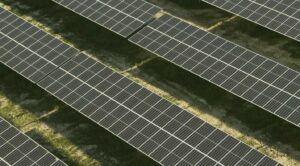Italy and Spain have set new records for solar generation in the past year, according to provisional data from their respective grid operators, with Italy trumping Germany as the most solar-powered industrialized nation in the world.
According to provisional data from the Italian transmission grid operator TERNA, and reported by Cleantechnica, solar energy provided 5.6 per cent of Italy’s electricity demand in 2012.
That makes it the most most solar-powered industrialized nation in the world, surpassing even Germany’s 4.8 per cent share of solar in the electricity supply.
According to the data quoted by Cleantechnia, Italian solar (almost entirely solar PV, produced a total of 18.3 TWh of energy last year, an increase of an 72 per cent compared to 2011.
Preliminary data suggests that the solar capacity in Italy rose to 17GW over roughly 470,000 systems in 2012, suggesting its share of production could rise to as much as 7 per cent in 2013.
And while incentives such as feed in tariffs have been slashed, and in some cases ended for new installation, the emergence of “grid parity” continues to drive the market, particularly in the commercial sector, where Australia’s CBD Energy, for instance, has a pipeline of 25MW of projects and recently sold a 5MW installation to a UK institution.
Though official numbers are not yet available, preliminary numbers suggest that the installed solar capacity in Italy rose to approximately 17 GW spread over roughly 470,000 systems in 2012.
In Spain, the share of solar also rose to 4 per cent, according to preliminary data from its grid operator Red Electrica de Espana, and quoted by Recharge News.
While this is lower than either Italy or Germany, the significant statistic from Spain is that one per cent of its production was met by large scale solar thermal power station, including those with storage and 24-hour delivery such as Gemasolar. Around 3 per cent of its energy production came from solar PV.
Spain’s total contribution from renewable energy sources was 32 per cent in 2012, down from 33 per cent in 2011 and 35 per cent in 2010 because of low reservoir levels at hydroelectric dams, Recharge reported.
Renewables contributed 23 per cent of total production in Germany and 11.7 per cent in the UK, according to Recharge. Spain has also been hit by changes to tariffs, including a retroactive cut to PV feed-in tariffs, and a new levy on electricity generation from wind energy, which contributed 18 per cent of Spain’s electricity generation.
Because of the decline in hydro power, coal power rose from 15 per cent to 20 per cent, causing overall power emissions to rise 11 per cent.








